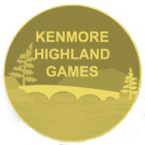History
A Brief History of Kenmore Highland Games
We are busy researching the history of the Highland Games at Kenmore which is taking some time. However, we thought you might like to read what we have discovered so far. Please come back soon to see what else we’ve managed to uncover!
The village of Kenmore can trace its origin way back to the 16th Century. At that time, it was called Inchadney and was approximately two miles from its current location, north of the River Tay.
In 1540, the village was moved to its present position when Sir Colin Campbell of Glenorchy built Balloch Castle, now known as Taymouth Castle. The village name was then changed to Kenmore. From high on the hills above Loch Tay, the area where the Loch meets the land below resembles a big head and shoulders. The Gaelic word Caenmore means “big head” and it is believed that this is how the village acquired its name, which was subsequently changed to Kenmore.
The date of the first Highland Games in Kenmore is unknown although we know that Games took place here in the 1843 when we discovered local newspaper reports that state Games were held that year to mark the anniversary of Queen Victoria and Prince Albert’s visit a year earlier in September 1842.
Those reports state that crowds gathered in Kenmore Square and proceeded through the West Gate, also called the Kenmore Gate, led by 150 Breadalbane Highlanders who had formed the Queen’s Guard the year before. They further report that Lord Breadalbane and guests were seated in a pavilion on a hill along with a vast crowd who had walked 5 minutes to take their place on a hill to watch the games.
Furthermore, the Games of 1843 featured a gun salute. We know that canons were situated on what is known locally as Hangman’s Hill at that time. Hangman’s Hill is the large tree-lined hill to the north of the sports ground.
These facts led us to realise that the current games are held in the same place as the games in 1843 which is quite extraordinary!
It is understood that the Games at Kenmore ceased around the turn of the 20th century for reasons which are not presently clear.
The good news is that they were resurrected around 1969/70 by a group of locals who were keen to have the Games back in Kenmore. Those locals were Duncan Menzies, Ian Menzies, Kenneth McVicar, Sandy Mitchell & Alec Dott, amongst others.
Kenmore Games are unusual in that they are the only Highland Games held on a Wednesday and held in the evening. This is because Games in Kenmore were held weekly to give locals and visitors to the area something to do. This eventually became a yearly event and now plays an important role in the Scottish Highland Games calendar.
When the Games were first resurrected, the sports field was situated to the east of the old gasworks at Mains of Taymouth – now Maxwells and Gallops Housing. Early Games were compared by Kenneth McVicar who was the local minister. The Games featured ‘Heavy’ events, running races, dancing, stalls and caravaners. There is also a recollection of competitive Pillow Fights taking place!
In 1975 the Kenmore & District Sports Association was constituted. The Kenmore Playing Fields was purchased, developed and made ready for use on 7th July 1976 – a Wednesday! The Games now had its new home and has since gone from strength to strength.
The Pavilion and children’s playing area you see today, were added at later dates.
Today’s games are organised and run by local volunteers who form the Committee of the Kenmore & District Sports Association. In order to make the Games as successful as they are, the group works throughout the year to prepare and ensure the ‘Friendly Games’ continue.
The Kenmore Sports Association also has a group of Trustees who oversee the Committee to ensure that the Games are held in the spirit of their forefathers – literally! The Trustees are Ian Duncan-Miller, Colin Menzies, Robin Menzies and George Mitchell whose fathers got together to get the Games going again some 50 years ago.
In past years, we have welcomed visitors from every part of the World you can name! The atmosphere created by these visitors as they watch the competitors is electric, making it a pleasure for all.
We are keen to hear from anyone who has any information about the history of Kenmore Highland Games, in particular photographs from the 1970s onwards would be very welcome.
